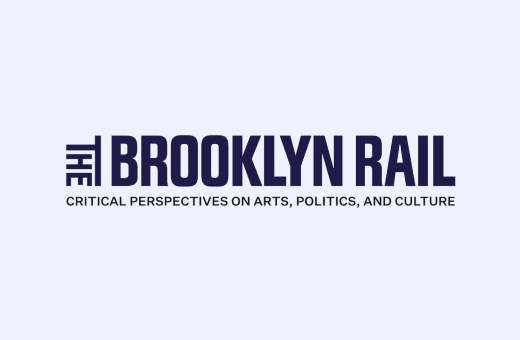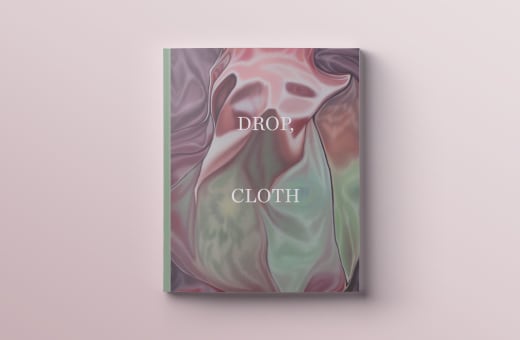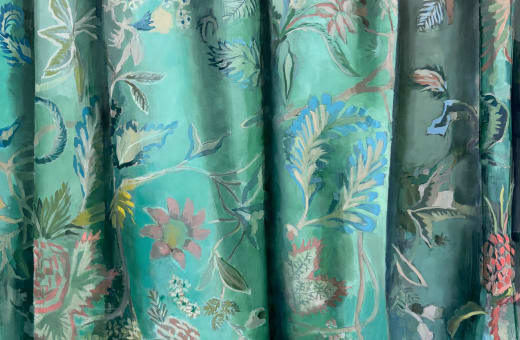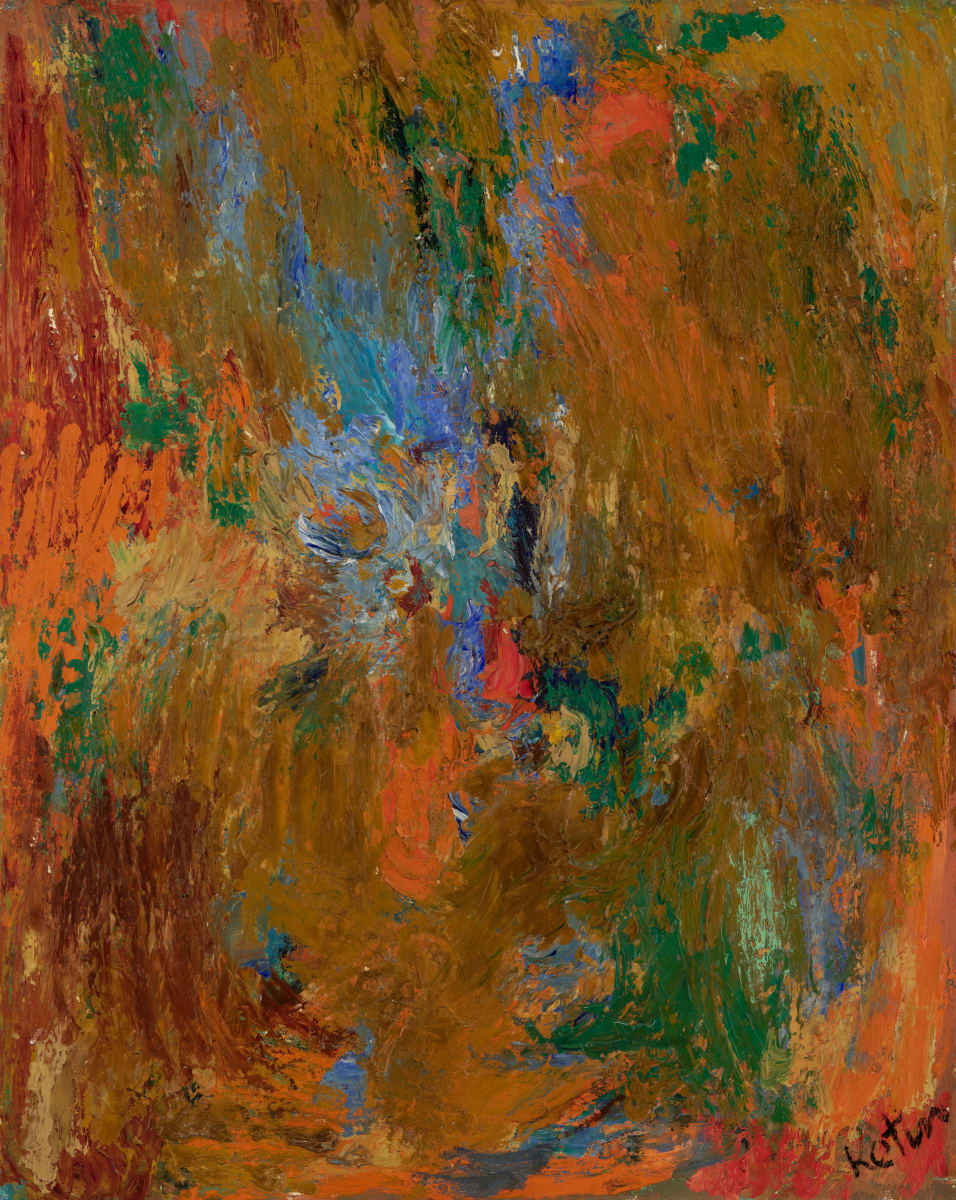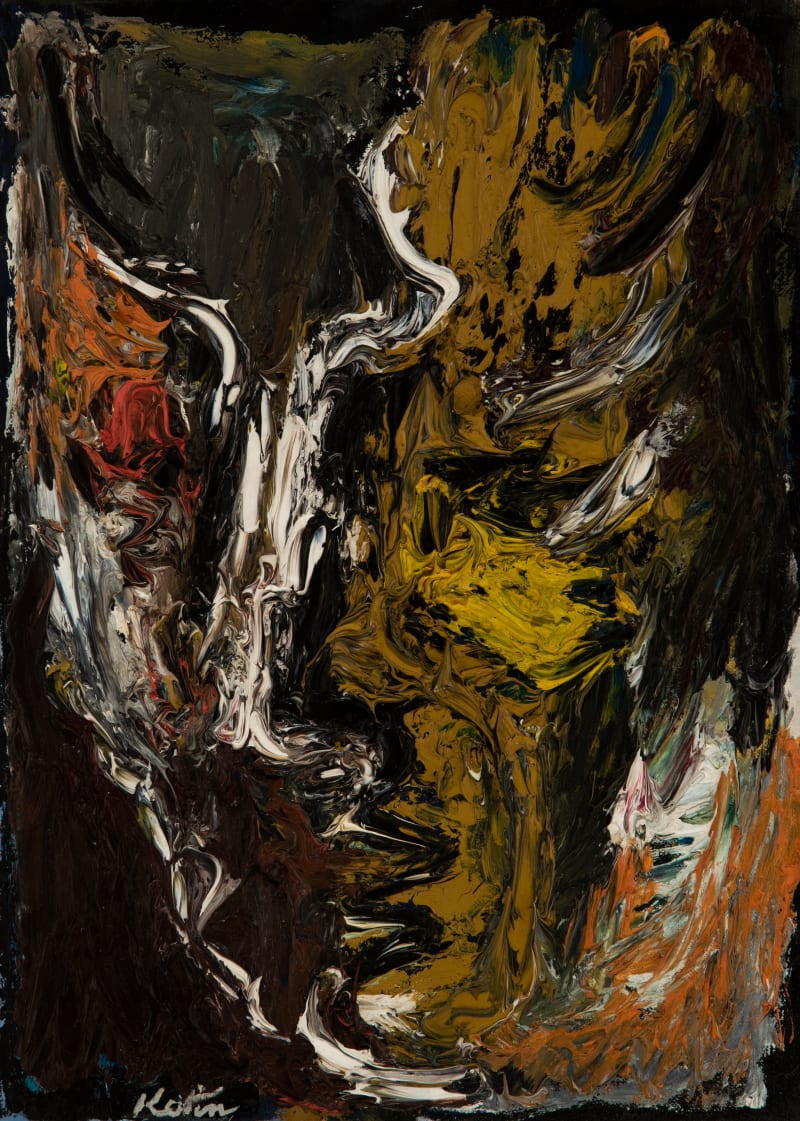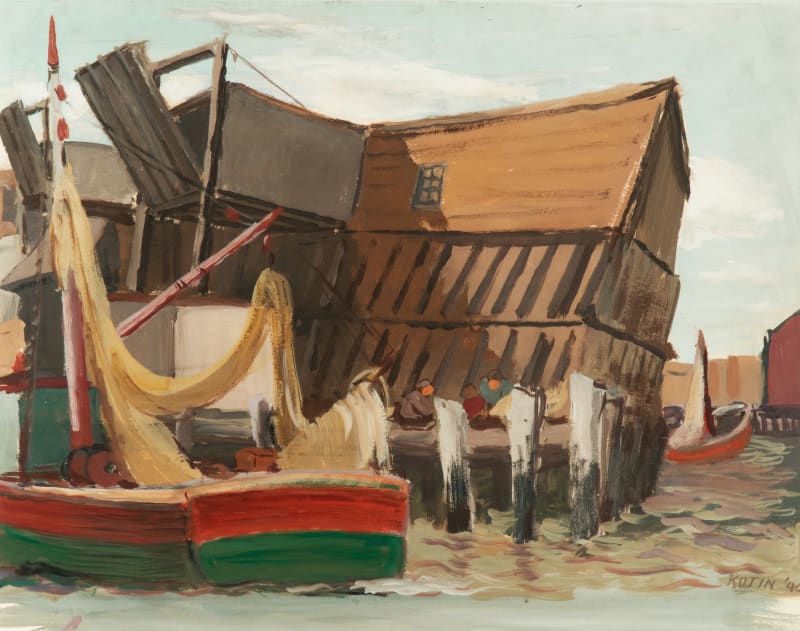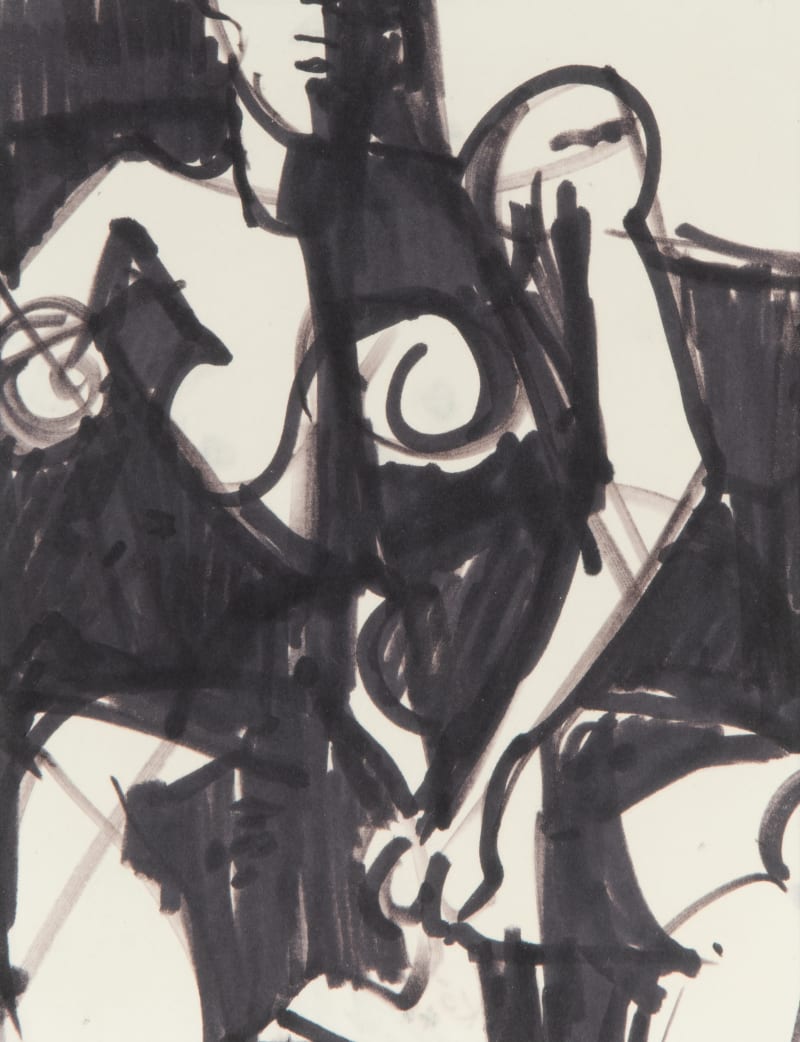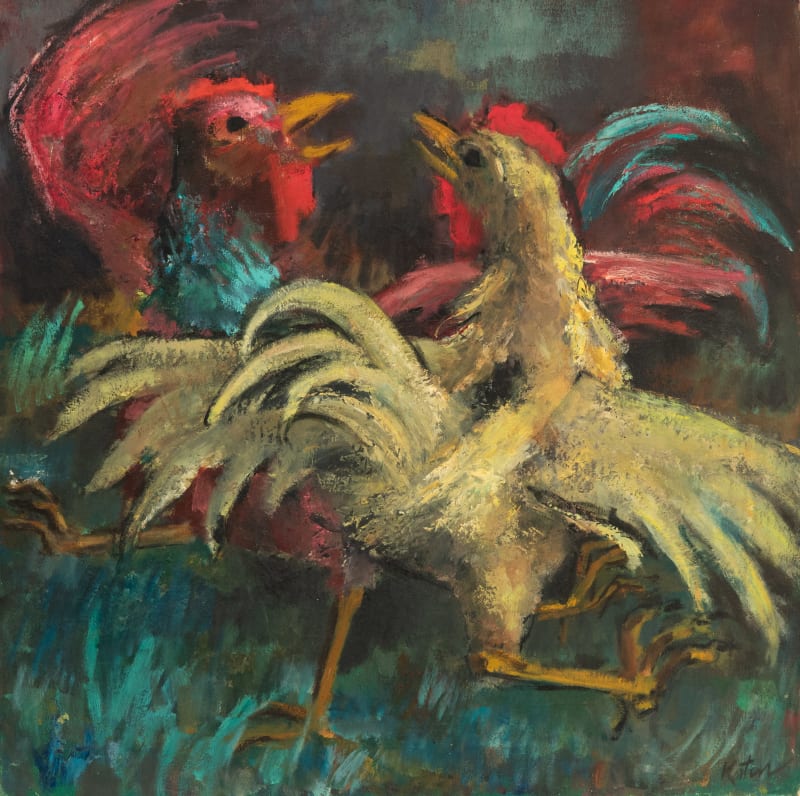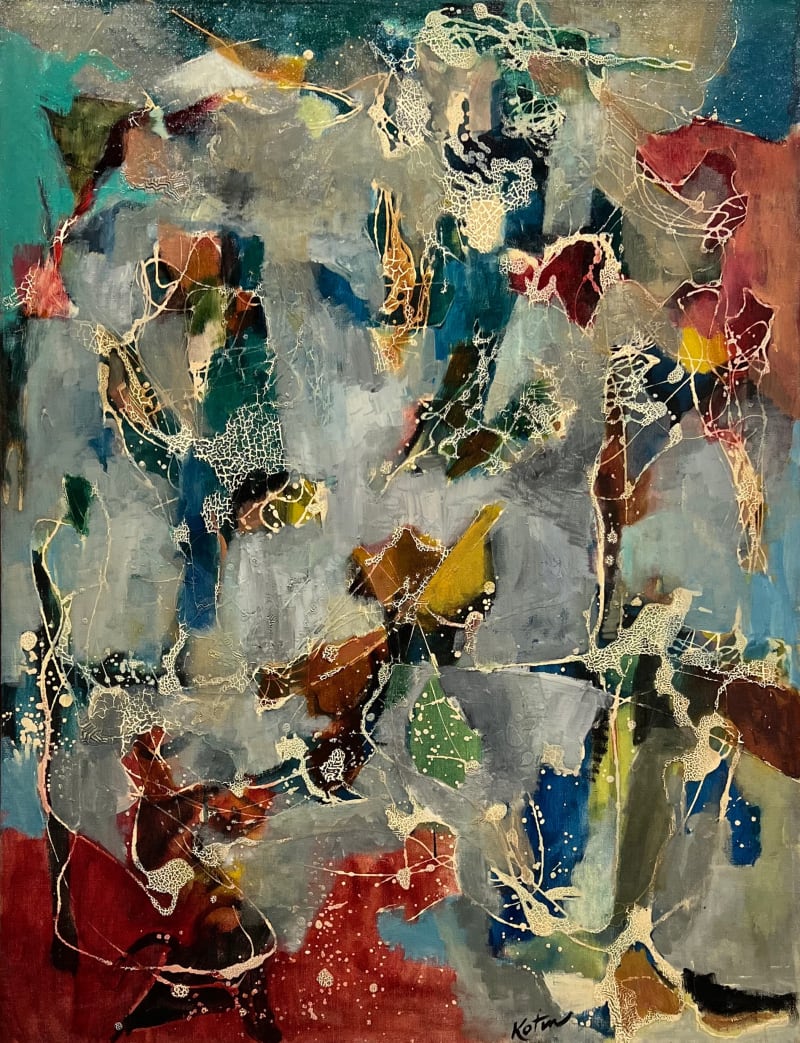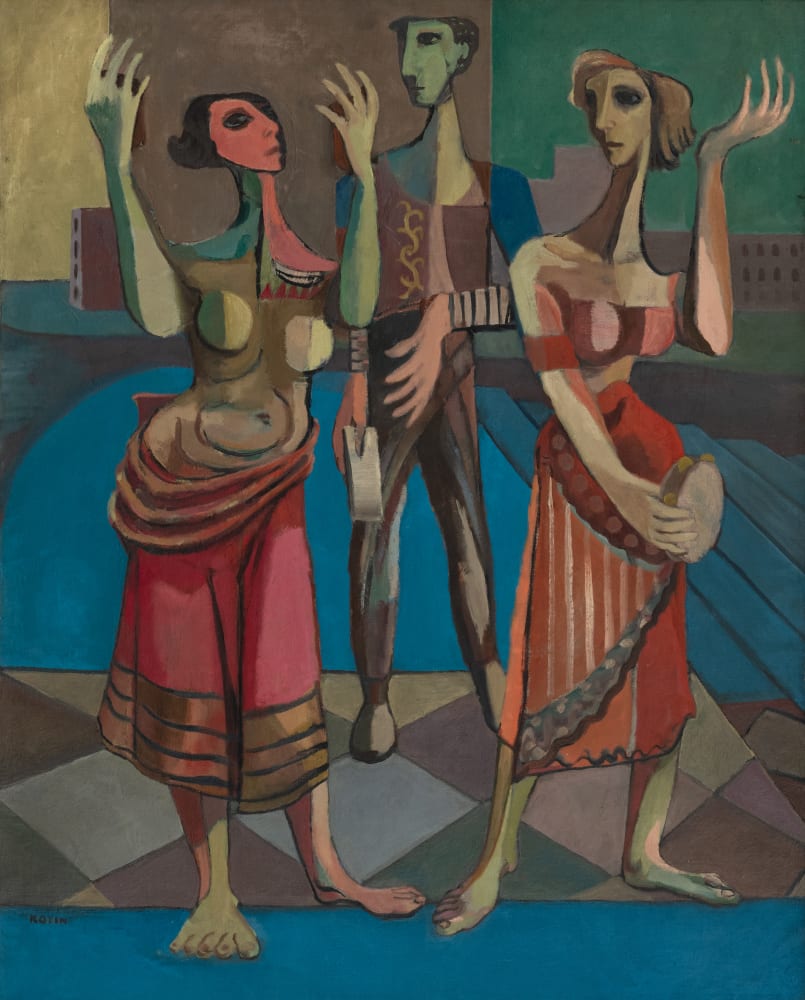
As long as there are people such as Kotin, there is no danger to art.
Hollis Taggart is pleased to present Albert Kotin: Primal Force, an expansive exhibition highlighting the rich, varied artistic career of this important American painter who was central to the formation of Abstract Expressionism. After mounting a successful solo exhibition of Kotin’s work in 2022, the gallery is delighted to present paintings that have not been shown previously, such as his early canvases from the late 1930s and early 1940s rendered in a figurative expressionist mode. These lyrical tableaux of everyday life find affinities with the work of fellow American artists like Marsden Hartley and Milton Avery. Curiously, after moving through figurative expressionism to impasto abstraction in the 1950s with dense tangles of marks, Kotin returned to figures–specifically faces–in the last stages of his career, as this exhibition shows.
Albert Kotin: Primal Force will include approximately 34 paintings that capture the evolution of Kotin’s practice and highlight the evocative canvases from the height of his career in the 1950s. As many of his works had been held and preserved by a single private collector for decades, Hollis Taggart has been involved in the process of bringing Kotin’s extraordinary works back into public view, including archival preservation and ongoing stewardship of Kotin’s legacy.
In his catalogue essay, art historian John Seed chronicles the fascinating life of this artist who immigrated to the Lower East Side in New York in 1908 from Belarus at the age of one. A young Kotin found refuge in artmaking from troubled home dynamics, and he trained in Paris at the Académie Julian for two years in 1929. During the Great Depression, Kotin eked out a living through mural commissions at various locations such as post offices and New York University’s sociology department. During World War II, Kotin worked as a cartography instructor in Virginia and after the war, established a studio in downtown Manhattan along with a new generation of young artists––many of whom were also from immigrant backgrounds, such as Willem de Kooning, Mark Rothko, and Jack Tworkov. As Seed writes, “The artist Pat Passlof, who arrived downtown in 1948, described her artist friends there as ‘the characters from a Russian novel. . . There were Italians; there were Greeks; there were Egyptians and Dutch and Spaniards and Armenians and Russians and even two Icelanders.’ Kotin, who had become an American citizen in 1923, was part of this vibrant mix at the very moment when Abstract Expressionism, the first internationally recognized American art movement, was being born.”
Thus, as a core member of the New York School’s first generation of Abstract Expressionists, Kotin enjoyed a prolific output in the 1950s as part of this “Downtown Group.” Crucially, Kotin was among the group of artists selected to participate in the historic Ninth Street Show in 1951 that formally inaugurated Abstract Expressionism as the first American art movement to exert international influence. Credited by critic Clement Greenberg for setting a precedent of showing experimental work, the Ninth Street Show launched the careers of numerous notable abstractionists including Helen Frankenthaler, Barnett Newman, and Joan Mitchell. Given the success of the 1951 show, the tradition continued for five years, and Kotin was one of the few artists to be invited to participate in every iteration—a distinction made more meaningful as participants were chosen by fellow artists. As the artist Alexander Calder wrote in 1968, "As long as there are people such as Kotin, there is no danger to art."
In the late 1950s, Kotin began experimenting with the size and placement of canvases, creating diptychs composed of two independently painted canvases. He also began making diminutive paintings, which at their smallest were around three by five inches, perhaps as a reaction against the prevailing grandiose scales of fellow Abstract Expressionists at the time. In later years, perhaps out of a tacit frustration at the limits of visual abstraction, Kotin turned to poetry, and his works from the 1960s often mobilize a symbolic use of words.
Meditating on Kotin’s long career, the artist and pioneering teacher Hans Hofmann wrote to Kotin in 1964, "It seemed to me that over a period of 20 years since I know you as an artist, as a student, and as a friend, that the development of your work has reached a climax of great magnitude and great beauty based on a continued profound introspection and painterly development." Indeed, in the same year, a review by the New York Herald Tribune of Kotin’s solo show at Byron Gallery remarked, “Though neglected, Kotin’s statement has the unmistakable ring of truth and conviction.”
Born in 1907 in Minsk, Albert Kotin immigrated to the United States in 1908. From 1929 to 1932, Kotin lived in Paris and studied at the Academié Julian, Académie de la Grande Chaumière, Atelier de Fresque, and Académie Colarossi. In 1933, Kotin was employed under the first government art program, Public Works of Art Project (PWAP), which lasted just seven months. Like Arshile Gorky and Willem de Kooning, Kotin was assigned to the murals division. After serving in the military as a cartography instructor, he studied at the Art Students League with Hans Hofmann from 1947 to 1951. As a result of inventing a compass that could also draw ellipses, Kotin was offered a teaching position at the Polytechnic Institute of Brooklyn, where he taught from 1952 to 1961. Afterwards, he taught at Long Island University from 1966 to 1975. Kotin died in 1980. His work has been exhibited at the Library of Congress, Washington, D.C. (1947); The New School for Social Research, New York (1948); Stable Gallery in New York (1951-57); Contemporary Arts Museum in Houston (1959); the Museum of Modern Art in New York (1963-64); and Long Island University, New York (1968), among others.
For more information about Albert Kotin: Primal Force, please contact us at info@hollistaggart.com or +1 212.628.4000.
For press inquiries, please contact Aga Sablinska at aga.sablinska@gmail.com or +1 862.216.6485.
Artworks


